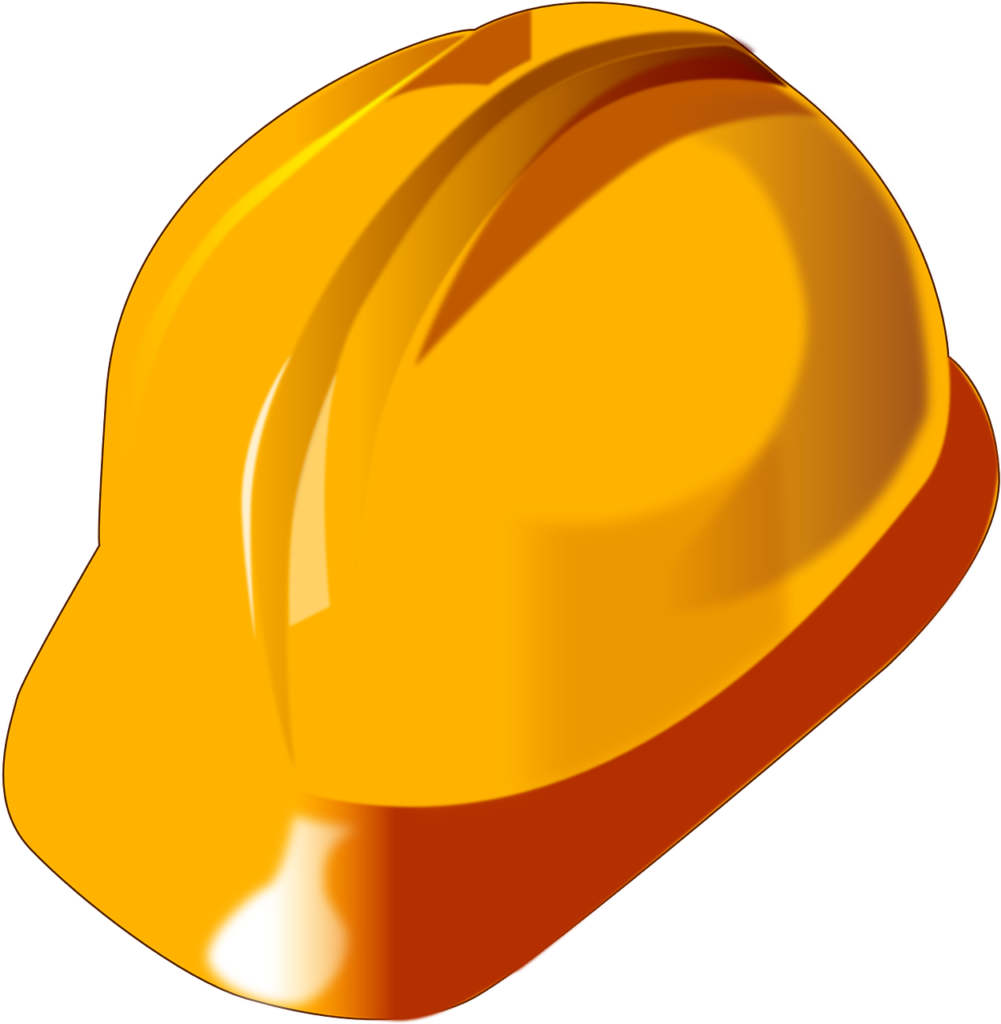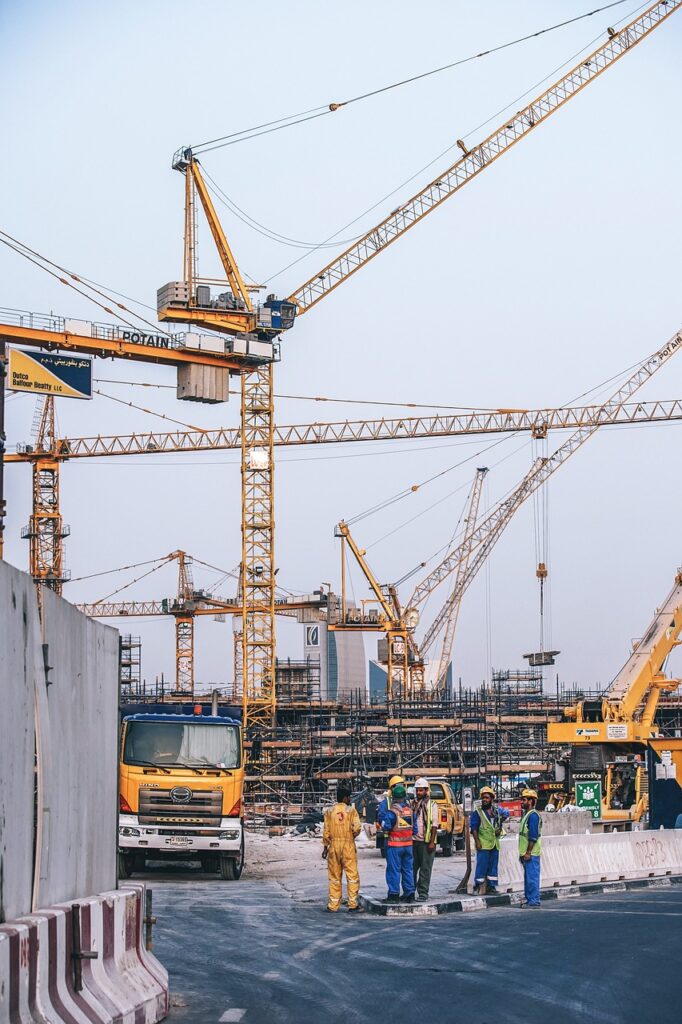In the fast-paced world of utility services, linemen play a crucial role in keeping our communities powered. However, their job comes with its fair share of risks and challenges. That’s why it’s essential to prioritize creating a safe work environment for linemen. By implementing effective safety protocols, providing comprehensive training, and fostering a culture of vigilance, we can ensure that these dedicated professionals can carry out their vital work with confidence and peace of mind.

Importance of a Safe Work Environment for Linemen
As a lineman, your safety should always be a top priority. Working with high-voltage power lines and equipment poses significant risks, making it crucial to establish a safe work environment. A safe workplace not only reduces the risk of accidents but also prevents injuries and fatalities. Moreover, it enhances productivity and efficiency by ensuring that you and your fellow linemen can focus on your tasks without unnecessary distractions or worries about your well-being. In this article, we will discuss various measures that can be taken to create and maintain a safe work environment for linemen.
Reducing the Risk of Accidents
The first step in fostering a safe work environment is to minimize the risk of accidents. To achieve this, comprehensive safety training is vital. By providing lineman with proper training and guidelines, employers can empower them to perform their duties with utmost caution and knowledge. Basic safety guidelines should cover essential aspects such as working at heights, identifying electrical hazards, emergency procedures, and proper use of equipment. This initial training will lay the foundation for safe work practices.
Preventing Injuries and Fatalities
While accidents may still occur despite precautions, a safe work environment significantly reduces the likelihood of severe injuries and fatalities. Specialized training for specific tasks is crucial in this regard. Linemen should receive training that addresses the unique challenges they face, such as working on live power lines, using specialized equipment, and handling hazardous materials. By equipping linemen with the knowledge and skills specific to their job requirements, employers can significantly decrease the risk of accidents and minimize the potential for severe injuries or even loss of life.
Enhancing Productivity and Efficiency
A safe work environment not only protects you but also enhances productivity and efficiency on the job. When linemen feel safe and secure, they can focus wholeheartedly on their tasks, resulting in improved job performance. A work environment that prioritizes safety promotes confidence and peace of mind, allowing you to work more efficiently without unnecessary stress or distractions. Moreover, accidents and injuries often result in lost work time and decreased productivity. By investing in safety measures, employers can save time and money by minimizing the impact of accidents on work schedules and ensuring uninterrupted workflow.

Implementing Comprehensive Safety Training
Comprehensive safety training is the cornerstone of maintaining a safe work environment for linemen. Therefore, employers should invest in providing thorough training programs to ensure that linemen are equipped with the necessary skills and knowledge to perform their duties safely.
Basic Safety Guidelines
Basic safety guidelines are the foundation upon which safe work practices are built. These guidelines should cover essential topics such as recognizing electrical hazards, using personal protective equipment (PPE), working at heights, and emergency procedures. Linemen should be trained on how to identify potential dangers in their working environment and how to mitigate risks effectively.
Specialized Training for Specific Tasks
In addition to basic safety guidelines, specialized training for specific tasks is crucial for linemen’s safety. This training should address the unique challenges they face, such as working on live power lines, using specialized tools and equipment, and handling hazardous materials. By providing linemen with tailored training to address the specific risks they encounter, employers can ensure their safety while performing their duties.
Continual Refresher Courses
Safety training is not a one-time event but an ongoing process. Regular refresher courses should be provided to reinforce the importance of safety practices and update linemen on any changes in regulations or procedures. These refresher courses not only help maintain a strong safety culture but also serve as reminders of the potential dangers associated with the job and the best practices to mitigate them.
Providing Proper Personal Protective Equipment (PPE)
Proper personal protective equipment (PPE) is essential in a lineman’s work environment. PPE is designed to protect you from potential hazards and minimize the risk of injuries. Employers should ensure that appropriate PPE is provided for each task and that linemen are educated on its proper usage and maintenance.
Ensuring Appropriate PPE for Each Task
Different tasks require different types of PPE. It is essential for employers to assess the specific hazards associated with each task and provide the appropriate protective gear accordingly. This may include items such as safety helmets, gloves, safety glasses, high-visibility clothing, and fall protection equipment. By considering the specific risks involved, employers can ensure that linemen have the necessary equipment to protect themselves effectively.
Regular Inspections and Maintenance of PPE
PPE must be regularly inspected and maintained to ensure its effectiveness. Employers should establish inspection protocols to check the condition of PPE and identify any signs of damage or wear. Linemen must also be trained to inspect their PPE regularly and report any issues promptly. Additionally, proper maintenance procedures should be followed to ensure that PPE remains in good working condition and provides the intended level of protection.
Training Employees on Proper Usage and Maintenance
Providing linemen with proper training on the correct usage and maintenance of PPE is essential. Employers should conduct training sessions to educate linemen on how to properly wear and use their protective gear. They should also be trained on how to clean and store PPE when not in use to extend its lifespan and ensure its reliability. By empowering linemen with the knowledge of how to effectively use and maintain their PPE, employers can maximize its benefits and protect their workforce.

Maintaining Equipment and Tools
Along with personal protective equipment, it is crucial to properly maintain the equipment and tools used by linemen. Regular inspections, appropriate storage, and prompt repairs or replacements are essential to create a safe work environment.
Regular Inspections and Maintenance Schedules
Employers should establish regular inspection and maintenance schedules for equipment used by linemen. Regular inspections help identify potential issues before they escalate into safety hazards. This includes inspecting tools, vehicles, and other equipment to ensure they are in good working condition and meet the necessary safety standards. By conducting regular inspections and following a maintenance schedule, employers can address any equipment-related safety concerns promptly.
Proper Storage and Handling of Equipment
Proper storage and handling of equipment are crucial in maintaining a safe work environment. Employers should establish clear guidelines on how equipment should be stored when not in use, ensuring that it is protected from damage or misuse. Linemen should also be trained on how to handle equipment safely, following guidelines to minimize the risk of accidents or injuries caused by improper handling.
Prompt Repairs and Replacements When Necessary
If equipment or tools are found to be faulty or damaged during inspections, prompt repairs or replacements should be made. Employers should have protocols in place to ensure that any faulty equipment is taken out of service immediately and repaired by qualified personnel. It is essential to maintain a proactive approach to equipment maintenance and address any issues promptly to prevent accidents or malfunctioning equipment that can compromise the safety of linemen.
Developing and Enforcing Safety Policies
Creating and enforcing comprehensive safety policies is essential in maintaining a safe work environment for linemen. Employers should develop clear and concise safety policies that address key safety concerns and promote a culture of safety among all employees.
Creating Comprehensive Safety Policies
Safety policies should cover all aspects of the work environment that could potentially pose risks to linemen. These policies should be developed in consultation with industry experts, taking into consideration relevant regulations and best practices. Safety policies should detail the specific safety procedures, guidelines, and expectations that linemen are required to follow.
Regular Communication and Training on Safety Policies
Once safety policies are in place, regular communication and training are essential to ensure that all linemen are aware of the policies and their importance. Employers should conduct regular meetings and training sessions to reinforce safety policies, provide updates when necessary, and address any questions or concerns raised by linemen. This open line of communication fosters a strong safety culture and ensures that everyone is on the same page when it comes to maintaining a safe work environment.
Implementing Consequences for Safety Policy Violation
Enforcing safety policies requires consistent action and accountability. Employers should establish consequences for any violations of safety policies and consistently apply these consequences when necessary. Linemen should be made aware of the potential consequences of disregarding safety policies, reinforcing the importance of compliance and the impact it has on their safety and that of their colleagues.
Ensuring Adequate Staffing Levels
Maintaining a safe work environment requires ensuring that there are sufficient staff members to complete tasks safely and efficiently. Adequate staffing levels allow for proper workload allocation and help prevent accidents caused by exhaustion or rushing to meet tight deadlines.
Sufficient Manpower for Each Task
Employers should ensure that there is sufficient manpower for each task. Overburdening linemen with excessive workload can lead to fatigue, stress, and decreased attention to safety protocols. By providing enough staff members to handle the workload without taking shortcuts or unnecessary risks, employers can maintain a safe work environment and support linemen in performing their tasks effectively.
Proper Workload Allocation
Besides having sufficient manpower, employers should also ensure proper workload allocation. Tasks should be distributed equitably and based on each lineman’s skills and abilities. This ensures that no one is overwhelmed with a workload beyond their capacity, reducing the risk of errors, accidents, or injuries caused by rushing or lack of focus.
Avoiding Excessive Overtime
Excessive overtime can lead to fatigue and decreased alertness, increasing the risk of accidents. While occasional overtime may be necessary to meet project deadlines, employers should ensure that linemen are not consistently subjected to excessive overtime. Establishing reasonable work hours and encouraging a healthy work-life balance helps prevent burnout and allows linemen to approach their work with a clear mind, reducing the risk of accidents and improving overall safety.
Promoting a Culture of Safety
Creating a culture of safety is vital in fostering a safe work environment. Employers should take proactive steps to promote open communication, recognize safe practices, and make safety an integral component of performance evaluations.
Encouraging Open Communication About Safety Concerns
An open line of communication between linemen and their superiors is crucial for identifying and addressing safety concerns. Employers should create an environment where linemen feel comfortable voicing their safety concerns without fear of reprisal. Regular safety meetings, suggestion boxes, or anonymous reporting systems can facilitate this communication and help in proactively addressing potential hazards.
Recognizing and Rewarding Safe Practices
Rewarding safe practices is an effective way to reinforce the importance of safety. Employers should establish recognition programs that acknowledge and reward linemen who consistently demonstrate a commitment to safety. This recognition can take the form of incentives, awards, or public acknowledgments. Recognizing and celebrating safe practices not only motivates linemen to maintain high safety standards but also sends a clear message that safety is valued and acknowledged by the organization.
Including Safety in Performance Evaluations
Safety should be an integral part of performance evaluations for linemen. By including safety metrics as part of their performance assessment, employers can emphasize the significance of safety and hold linemen accountable for maintaining safe work practices. This approach ensures that safety is given the same level of importance as other job-related responsibilities and helps sustain a culture of safety within the organization.
Conducting Regular Safety Inspections
Regular safety inspections are crucial in maintaining a safe work environment. Employers should schedule inspections of work sites and equipment to identify potential hazards and address them promptly.
Scheduled Inspections of Work Sites and Equipment
Employers should establish a schedule for regular safety inspections of work sites and equipment. These inspections should be conducted by qualified individuals who are knowledgeable about safety protocols. They should inspect the work environment, identify any potential hazards, and ensure that safety measures are in place and being followed.
Identifying and Addressing Potential Hazards
Safety inspections are an opportunity to identify and address potential hazards before they result in accidents or injuries. Employers should proactively seek out potential hazards such as faulty equipment, defective safety systems, inadequate signage, or insufficient training. Any identified hazards should be promptly addressed to eliminate or minimize the risk they pose to linemen’s safety.
Documenting and Addressing Safety Issues Promptly
During safety inspections, all identified safety issues should be carefully documented. This documentation serves as a record of safety concerns and helps track the progress of addressing them. Employers should establish protocols for addressing safety issues found during inspections and ensure that they are resolved promptly. Timely action on safety concerns demonstrates a commitment to maintaining a safe work environment for linemen.
Implementing Emergency Response Plans
Despite all precautions, emergencies can still occur. Establishing detailed emergency response plans is crucial in ensuring that linemen are prepared to handle unexpected situations safely and effectively.
Developing Detailed Emergency Procedures
Employers should develop detailed emergency procedures that outline specific steps to be followed in various emergency scenarios. These procedures may cover situations such as electrical accidents, fires, severe weather conditions, or chemical spills. By providing clear guidelines and protocols, employers can ensure that linemen respond to emergencies in a coordinated manner, minimizing the risk to themselves and others.
Regular Drills and Simulations
Regular drills and simulations are necessary to familiarize linemen with emergency procedures and reinforce their training. Employers should schedule drills to simulate different emergency scenarios, allowing linemen to practice their response and identify areas for improvement. These drills should be conducted on a regular basis to ensure that linemen maintain their preparedness and can respond effectively in real-life emergencies.
Providing Appropriate Training and Resources
Employers should provide linemen with appropriate training and resources to handle emergencies. This may include training in first aid, CPR, fire safety, and the use of emergency equipment. Additionally, linemen should have access to emergency equipment, such as fire extinguishers, first aid kits, and communication devices, to enable them to respond effectively. By equipping linemen with the necessary training and resources, employers can maximize the chances of a safe and successful response to emergencies.
Creating a Supportive Work Environment
In addition to physical safety measures, creating a supportive work environment is vital for the overall well-being of linemen. Addressing mental health, promoting work-life balance, and combating workplace harassment and discrimination contribute to a safe and healthy work environment.
Providing Counseling and Support for Mental Health
The nature of the work performed by linemen can be demanding and stressful, which can impact mental health. Employers should provide access to counseling services or employee assistance programs that offer support for mental health issues. Promoting an open environment where linemen feel comfortable seeking help for mental health concerns can help alleviate stress and create a healthier work environment.
Encouraging Work-Life Balance
Work-life balance is crucial for reducing stress and preventing burnout. Employers should encourage linemen to prioritize their personal lives and ensure that reasonable work hours are established. This can be achieved by managing workloads effectively, avoiding excessive overtime, and providing opportunities for time off. By prioritizing work-life balance, employers demonstrate their commitment to the well-being of their linemen and contribute to a more supportive and safe work environment.
Addressing Workplace Harassment and Discrimination
Harassment and discrimination can negatively impact the work environment and affect the safety and well-being of linemen. Employers should establish clear policies against harassment and discrimination and provide training to all employees on these policies. Creating a culture of respect and tolerance helps prevent workplace conflicts and ensures that linemen feel safe and valued. Employers should also establish mechanisms for reporting and addressing any instances of harassment or discrimination promptly and effectively.
In conclusion, creating a safe work environment for linemen is of utmost importance. It not only reduces the risk of accidents and injuries but also enhances productivity and efficiency. By implementing comprehensive safety training, providing proper personal protective equipment, maintaining equipment and tools, developing and enforcing safety policies, ensuring adequate staffing levels, promoting a culture of safety, conducting regular safety inspections, implementing emergency response plans, and creating a supportive work environment, employers can prioritize the safety and well-being of their linemen. It is a shared responsibility, and all stakeholders must collaborate to ensure that linemen can perform their important tasks in a safe and secure environment.




